Mislocalization of the cell polarity protein scribble promotes mammary tumorigenesis and is associated with basal breast cancer
- PMID: 24662921
- PMCID: PMC4096808
- DOI: 10.1158/0008-5472.CAN-13-3415
Mislocalization of the cell polarity protein scribble promotes mammary tumorigenesis and is associated with basal breast cancer
Abstract
Scribble (SCRIB) localizes to cell-cell junctions and regulates establishment of epithelial cell polarity. Loss of expression of SCRIB functions as a tumor suppressor in Drosophila and mammals; conversely, overexpression of SCRIB promotes epithelial differentiation in mammals. Here, we report that SCRIB is frequently amplified, mRNA overexpressed, and protein is mislocalized from cell-cell junctions in human breast cancers. High levels of SCRIB mRNA are associated with poor clinical prognosis, identifying an unexpected role for SCRIB in breast cancer. We find that transgenic mice expressing a SCRIB mutant [Pro 305 to Leu (P305L)] that fails to localize to cell-cell junctions, under the control of the mouse mammary tumor virus long terminal repeat promoter, develop multifocal hyperplasia that progresses to highly pleomorphic and poorly differentiated tumors with basal characteristics. SCRIB interacts with phosphatase and tensin homolog (PTEN) and the expression of P305L, but not wild-type SCRIB, promotes an increase in PTEN levels in the cytosol. Overexpression of P305L, but not wild-type SCRIB, activates the Akt/mTOR/S6K signaling pathway. Human breast tumors overexpressing SCRIB have high levels of S6K but do not harbor mutations in PTEN or PIK3CA, identifying SCRIB amplification as a mechanism of activating PI3K signaling in tumors without mutations in PIK3CA or PTEN. Thus, we demonstrate that high levels of mislocalized SCRIB functions as a neomorph to promote mammary tumorigenesis by affecting subcellular localization of PTEN and activating an Akt/mTOR/S6kinase signaling pathway.
©2014 American Association for Cancer Research.
Conflict of interest statement
The authors declare no conflict of interest.
Figures
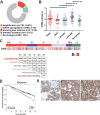

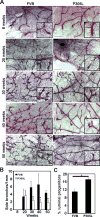
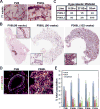
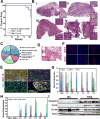
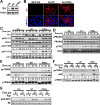

References
-
- Bilder D, Perrimon N. Localization of apical epithelial determinants by the basolateral PDZ protein Scribble. Nature. 2000;403(6770):676–80. - PubMed
-
- Elsum IA, Martin C, Humbert PO. Scribble regulates an EMT polarity pathway through modulation of MAPK-ERK signaling to mediate junction formation. J Cell Sci. 2013;126(Pt 17):3990–9. - PubMed
Publication types
MeSH terms
Substances
Grants and funding
LinkOut - more resources
Full Text Sources
Other Literature Sources
Medical
Molecular Biology Databases
Research Materials
Miscellaneous

